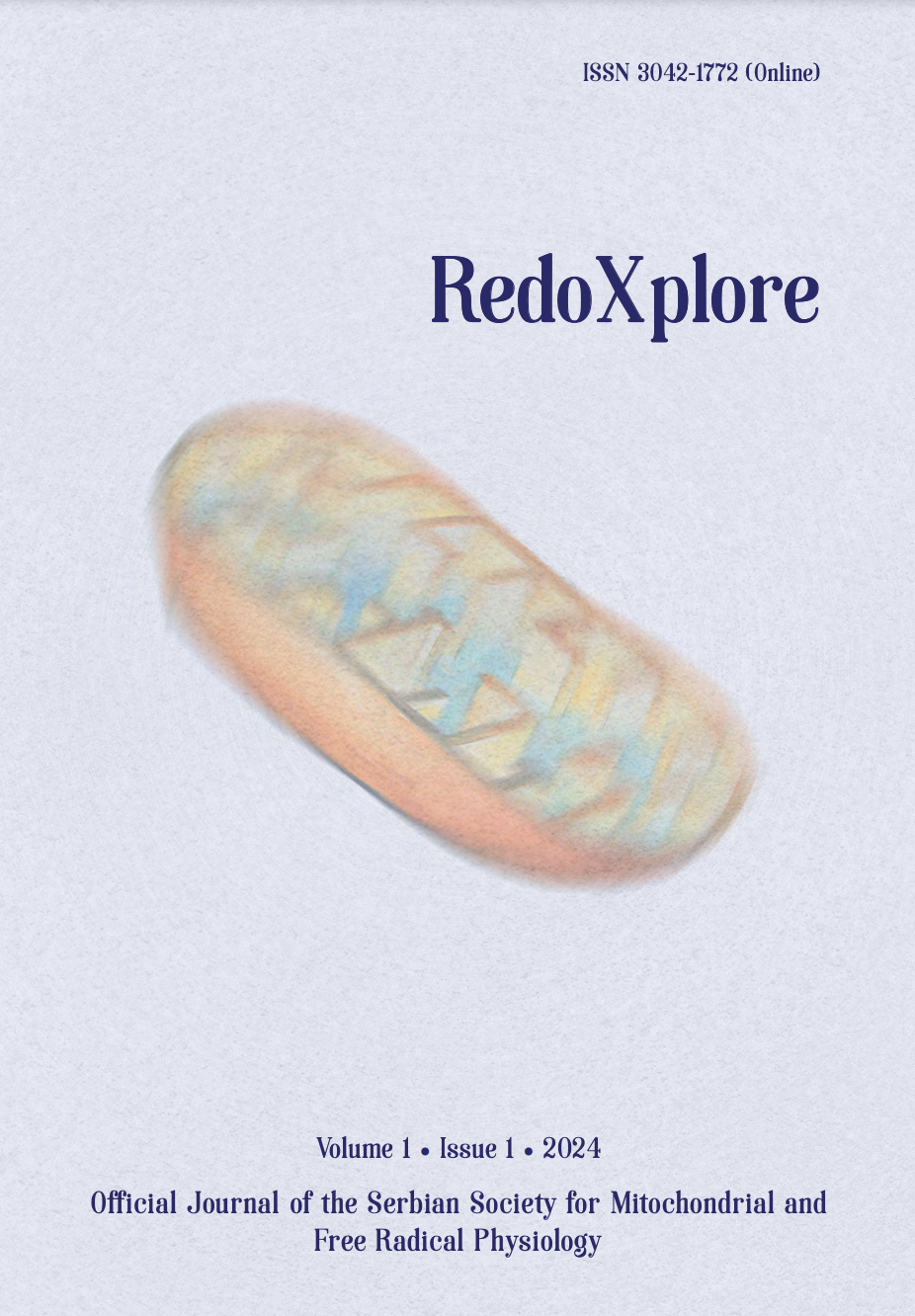
More articles from Volume 1, Issue 1, 2024
REDOX AND METABOLIC REPROGRAMMING OF BREAST CANCER CELLS AND ASSOCIATED ADIPOSE TISSUE - THE CORNERSTONES OF ADAPTIVE TUMOUR BEHAVIOUR
INSULIN MODULATES MITOCHONDRIAL STRUCTURAL AND FUNCTIONAL MOSAICISM IN BROWN ADIPOCYTES
NITRITE MITIGATES OXIDATIVE BURST IN ISCHEMIA/REPERFUSION IN BRAIN SLICES
NITRIC OXIDE, SUPEROXIDE AND PEROXYNITRITE – REDOX REGULATION OF THE CARDIOVASCULAR SYSTEM BY NITRO-OXIDATIVE STRESS AND S-NITROS(YL)ATION
DIETARY NITRATE AS PIVOT ON THE GUT MICROBIOTA-HOST REDOX COMMUNICATION
NITRITE MITIGATES OXIDATIVE BURST IN ISCHEMIA/REPERFUSION IN BRAIN SLICES
Faculty of Pharmacy and Center for Neuroscience and Cell Biology, University of Coimbra , Coimbra , Portugal
Faculty of Pharmacy and Center for Neuroscience and Cell Biology, University of Coimbra , Coimbra , Portugal
Faculty of Pharmacy and Center for Neuroscience and Cell Biology, University of Coimbra , Coimbra , Portugal
Faculty of Pharmacy and Center for Neuroscience and Cell Biology, University of Coimbra , Coimbra , Portugal
Editor: Bato Korac
Published: 29.08.2024.
Keynote lectures
Volume 1, Issue 1 (2024)
Abstract
Nitrite is the typical byproduct of nitric oxide (•NO) autooxidation in biological systems. However, certain circumstances favor its reduction “back” to the signaling free radical, providing a non-enzymatic route for the synthesis of •NO. In pathophysiological conditions such as ischemia/reperfusion (I/R), where low oxygen availability limits nitric oxide synthase activity, nitrite reduction to •NO may allow protective modulation of mitochondrial oxidative metabolism and thus reduce the impact of I/R on brain tissue. In the current study, we used high-resolution respirometry to evaluate the effects of nitrite in an in vitro model I/R using hippocampal slices. We found that reoxygenation was accompanied by an increase in oxygen flux, a phenomenon that has been coined “oxidative burst”. The amplitude of this “oxidative burst” was decreased by nitrite in a concentration-dependent manner. These results support the notion that nitrite mediates a decrease in the hyper-reduction of the electron transport system during ischemia, decreasing the accelerated oxygen consumption that characterizes the reoxygenation phase of I/R that has been associated with an increase in oxidant production. Additionally, a pilot in vivo study in which animals received a nitrate-rich diet as a strategy to increase circulating and tissue levels of nitrite also revealed that the “oxidative burst” was decreased in the nitrate-treated animals. These results may provide mechanistic support to the observation of a protective effect of nitrite in situations of brain ischemia.
Citation
Copyright

This work is licensed under a Creative Commons Attribution-NonCommercial-ShareAlike 4.0 International License.
Article metrics
The statements, opinions and data contained in the journal are solely those of the individual authors and contributors and not of the publisher and the editor(s). We stay neutral with regard to jurisdictional claims in published maps and institutional affiliations.






